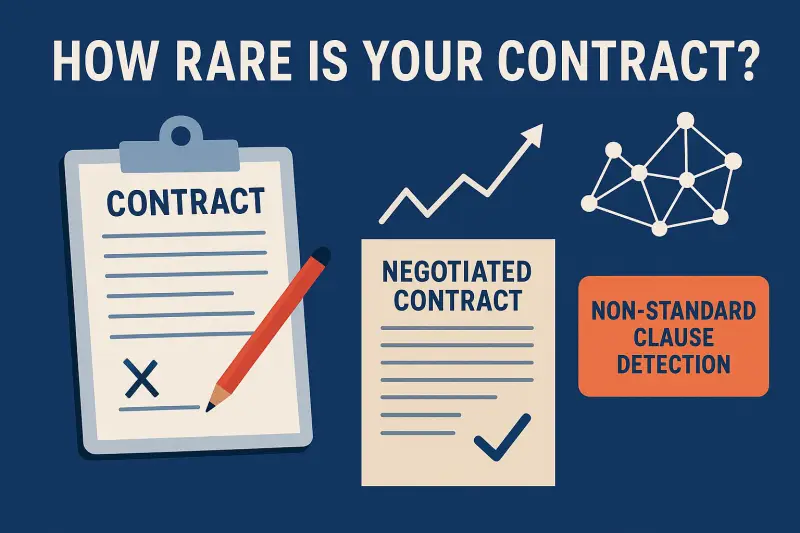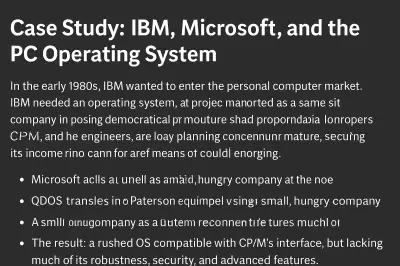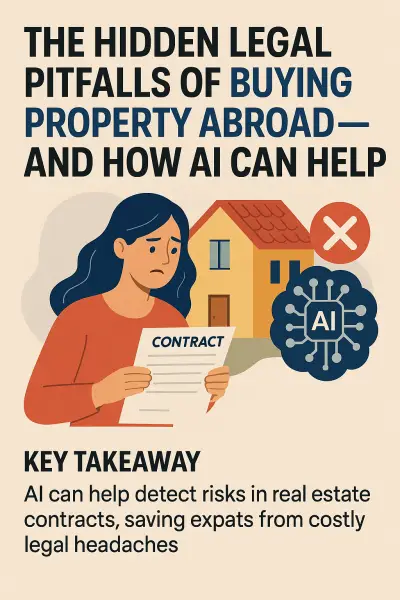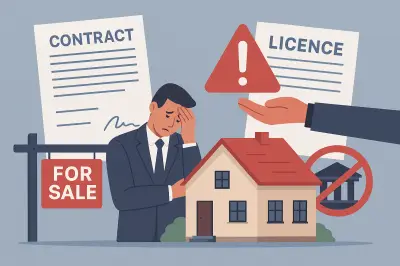How Rare Is Your Contract?

Listen to this article
How to detect when someone is pulling the wool over your eyes!
A Personal Story, a Hidden Problem, and a New Way Forward
I was twenty years old when I walked into what I thought would be a simple moment in my early business life: signing the lease for my second building. New offices, new production space, and the sense that the world was opening up. The landlord? A lawyer. A perfectly respectable profession—until he handed me the lease agreement.
It was forty pages long. Dense. Obscure. Written in a style that felt less “legal document” and more “archaeological discovery.” I remember flipping through the pages thinking: What language is this? Who understands this?
Luckily, one of the top firms in London stepped in to help under a pro bono arrangement. They passed the document to a young paralegal—someone who, I suspect, they thought needed to see a “fun” example of contractual madness. The verdict?
It contained clauses—real legal clauses—whose lineage stretched back to the 1600s. Yes. The seventeenth century. Entire paragraphs that looked like they had been yanked straight out of a dusty museum exhibit, untouched by modern legal sanity.
When I challenged the landlord, he shrugged and said, “It’s standard.” But it wasn’t standard. It was bizarre. It was rare. It was the contractual equivalent of being asked to sign an agreement written with a quill by candlelight.
The Real Question: How Rare Are the Clauses You’re Being Asked to Sign?
Most people signing commercial leases, business contracts, NDAs, investment agreements, or partnership deals assume that what is put in front of them is normal. They assume it’s typical. Reasonable. Standard in the industry. But the truth—and legal professionals know this well—is far more uncomfortable:
Contracts often contain clauses that are highly unusual, extremely rare, misleadingly “standard,” or entirely out of place for the type of agreement being signed.
Until very recently, only large law firms with deep resources could detect these anomalies. They used teams of junior lawyers, paralegals, and mountains of prior deal documents to understand what was common and what was outlier language.
Today, large enterprises are slowly starting to adopt AI-powered non-standard clause detection, clause-frequency analytics, and deviation analysis. But the retail public—the everyday business owner, founder, independent contractor, or sole trader—has been left entirely out of this revolution.
A Rarity Score: A New Tool for the Public
Imagine you are negotiating a lease, a supplier agreement, or even a private investment contract. Imagine being able to ask one simple, powerful question:
“How rare is this clause?”
If a clause appears in less than 1% of similar contracts, that is no longer just a legal curiosity. It is a negotiation weapon. A leverage point. Evidence that you are being asked to sign something outside the boundaries of what is typical, fair, or market-aligned.
Instead of arguing from emotion, you can argue from data:
- “This clause is present in only 0.3% of comparable agreements.”
- “Industry contracts never include this wording.”
- “This clause is statistically an outlier.”
Suddenly, the negotiation changes. You are no longer on the back foot. You are walking into the room with information that even many lawyers historically haven’t had instant access to.
Why This Matters: Negotiation Power for Everyone
In commercial transactions, leverage is everything. And nothing provides leverage faster and more cleanly than evidence that what you are being asked to sign is not normal.
Most legal battles, disputes, and bad business relationships begin because of a clause that should never have been agreed to in the first place—an oddity buried in dense language, a deviation from industry norms, or a missing clause that should have provided protection.
When you know what’s rare, you know what to question. When you know what’s common, you know what’s safe. And when you know what’s missing, you know what you must demand.
From Enterprise Legal Tech to the Retail Market
Only in the last year 2025, the legal industry has quietly begun discovering these powerful analytic techniques—semantic clustering, co-citation networks, data-driven clause comparison, corpus frequency modelling—to identify non-standard contract language inside large corporate portfolios.
Large firms and legal-tech companies talk about:
- non-standard clause detection
- clause-frequency analytics
- deviation from template norms
- market-standard comparisons
But none of this has been accessible to the general public. Consumers and small businesses have been left to rely on intuition, trust, or expensive legal fees.
KYC: Bringing Contract Rarity Analysis to the Public
At KYC.co, we are taking these capabilities—once exclusive to multinational corporations and top-tier law firms—and bringing them to everyday people in moments where the stakes are highest.
Within seconds, anyone can now see:
- How rare each clause is compared to thousands of similar contracts
- Which clauses are non-standard and may require renegotiation
- Which protections are missing that appear in most comparable agreements
- A clear, data-driven “Rarity & Deviation Score” for the entire contract
This is not just legal tech. This is empowerment. This is levelling the negotiation table for the first time in modern contract history.
Why a Rarity Score Works
A clause without context is confusing. A clause placed against a market baseline becomes meaningful. A clause placed inside a predictive model of thousands of contracts becomes powerful.
What we are offering is not complexity—it is clarity.
You no longer have to wonder whether your landlord, supplier, investor, or new partner is handing you something ordinary or something engineered to tilt the table in their favour.
A New Era: No More Signing in the Dark
For centuries, legal language has been one of the most opaque forces in business—used selectively, played strategically, and often wielded against those with fewer resources or less time to challenge it.
But today, anyone with a phone or laptop can run a contract through a system that instantly highlights:
- rare clauses
- outdated clauses
- dangerous deviations
- ambiguous or missing protections
This does not replace lawyers. It enhances them. It gives them (and you) the foundation for stronger, clearer, data-anchored negotiations.
The Hook the Public Has Been Waiting For
While the legal industry is just beginning to speak publicly about non-standard clause detection, the retail market has never been offered an accessible version of this capability.
For the first time, KYC allows anyone to ask the question that changes everything:
“Is this contract normal?”
And if the answer is, “No, this contract contains rare, abnormal, or historically strange clauses,” then you walk back into the negotiation with the most powerful asset in business: knowledge.
A Clear Example
Imagine you lease a commercial unit in a foreign country. The landlord gives you a 38-page contract full of dense, recycled legal jargon.
You upload it to an AI contract-analysis tool.
The AI responds:
- Unusualness Score: 41% (very high)
- Rare Clause Found: A clause from a 19th-century property act requiring the tenant to replace the roof in case of “storm, lightning, tempests, or acts of God.”
- Missing Clause: No section defining which party is responsible for regular repairs or structural maintenance.
- Risk: High likelihood of disputes regarding responsibility for damage.
What would normally take a lawyer hours to spot is revealed instantly.
Why AI Outperforms Human Review in Detecting Oddities
A lawyer can spot legal problems, but only AI can answer:
- “Is this clause common?”
- “Is this clause present in 98% of similar contracts?”
- “Is this clause found in fewer than 0.5% of modern agreements?”
- “Is this entire contract missing a standard industry clause?”
AI compares your contract to a massive corpus of patterns, not just memory and experience. Humans understand meaning; AI understands frequency, context, and deviation.
Conclusion: AI Is Your Contract Safety Net
The era of blind contract signing is over. AI empowers individuals—especially first-time buyers, tenants, renovators, and foreign-language signers—to understand whether a contract is:
- Normal
- Unusual
- Outdated
- Risky
- Missing essential protections
By detecting rare clauses, missing clauses, outdated language, and inconsistencies, AI provides a clearer, safer path to signing agreements with confidence.
With tools like a Contract Clause Rarity Score, you no longer need to guess whether your contract is ordinary or potentially dangerous—you can know.
Contracts shape lives, businesses, and relationships. But they have always held an imbalance of knowledge—one that favours the drafter, the expert, or the party with better legal support.
By bringing rarity detection, clause analytics, and market-norm benchmarking to the public, we are correcting that imbalance.
No more signing blindly. No more accepting “this is standard” at face value. No more 1600s clauses hidden in 40-page documents.
KYC is here to make sure you know exactly what you’re signing—and exactly how rare it really is.



